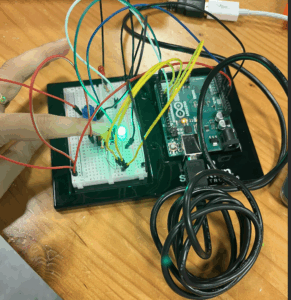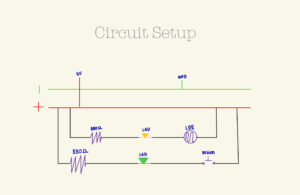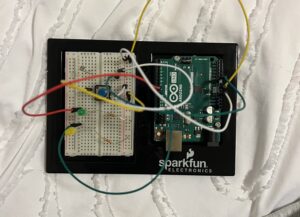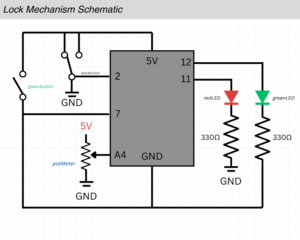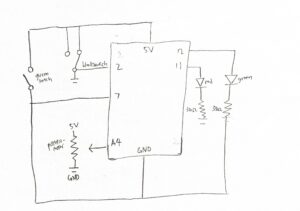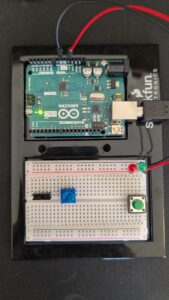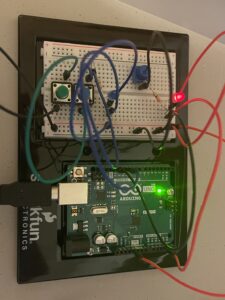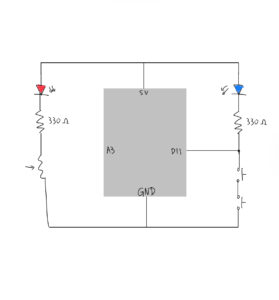Concept
Parking lots can often be a frustrating experience, especially when it’s hard to tell whether a spot is free or occupied without driving around aimlessly. I wanted to create a simple, interactive system using Arduino that mimics real-world parking indicators: a yellow light that changes brightness when a car is moving in or out, and a red light that turns on when a spot is occupied. This way, drivers can quickly see which spots are available and which are taken, making the parking process smoother and more intuitive.
Implementation
To achieve this, I used an ultrasonic sensor to detect the movement of cars. The sensor works by sending out a pulse from the trigger pin, which bounces off an object and returns to the echo pin. The Arduino then calculates the distance based on the time it takes for the pulse to return. I mapped this distance to the brightness of a yellow LED, so that the closer a car gets to the parking spot, the brighter the yellow light becomes. A slide switch allows us to manually indicate when a car is parked: flipping the switch turns on a red LED and turns off the yellow light, clearly showing that the spot is occupied. Two 330-ohm resistors ensure the LEDs operate safely without drawing too much current.
cardemo
Code I’m proud of
// Trigger pulse digitalWrite(trigPin, LOW); delayMicroseconds(2); digitalWrite(trigPin, HIGH); delayMicroseconds(10);digitalWrite(trigPin, LOW); // Read echo duration = pulseIn(echoPin, HIGH); distance = duration * 0.0343 / 2.0;
I’m particularly proud of the code I wrote for this project. Writing it taught me a lot about how ultrasonic sensors work and how to use the trigger and echo functionality effectively.
Future Developments
For future development, the system could be expanded to include a green LED, which would light up to indicate available parking spots. In that scenario, the green light would show availability, the yellow LED would indicate movement, and the red LED would signal when a spot is taken. Eventually, this could be automated further so that the sensor alone detects whether a car is parked, eliminating the need for the manual switch. Overall, this project was a great exercise in combining sensors, outputs, and user interaction to create a functional and visually intuitive system.





